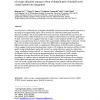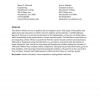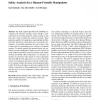65 search results - page 2 / 13 » Urologic robots and future directions |
ICRA
2010
IEEE
13 years 6 months ago
2010
IEEE
— Insects rely on sensory cues—tactile, hygrometric, thermal, olfactory—gathered with a pair of head-mounted antennae to perform a wide variety of sensory guided tasks. Many ...
AROBOTS
2010
13 years 7 months ago
2010
Locusts possess a bilateral pair of uniquely identifiable visual neurons that respond vigorously to the image of an approaching object. These neurons are called the lobula giant m...
EXPERT
2000
13 years 7 months ago
2000
The field of robotics moves so quickly and encompasses such a wide range of disciplines and applications that education in robotics must be adaptive and incorporate a multidiscipl...
CCIA
2005
Springer
14 years 29 days ago
2005
Springer
— This paper proposes a high-level Reinforcement Learning (RL) control system for solving the action selection problem of an autonomous robot. Although the dominant approach, whe...
IJSR
2010
13 years 2 months ago
2010
Abstract The DLR Lightweight Robot III (LWR-III) developed at the German Aerospace Center (DLR) is characterized by low inertial properties, torque sensing in each joint, and a loa...



